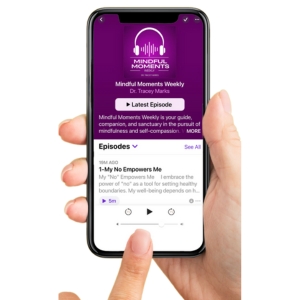Unlocking the Secrets of Sleep Cycles
Have you ever had a full night’s sleep but still felt exhausted when you woke up? Or maybe you’ve slept less than usual and somehow felt more refreshed? The answer lies in the cycles your brain goes through each night. Sleep isn’t just “off” time for the brain—it’s an active process of restoration, with each cycle playing a unique role in supporting mental resilience. Here’s a look at the science behind sleep cycles and practical ways to make the most of them.
Products To Support You

Mindful Moments Subscription

40 oz Seat at the Table Tumbler
Understanding Sleep Cycles
Sleep is more than a straight 8-hour stretch. Instead, it’s a series of 90-minute cycles, with each cycle containing specific stages that serve different functions for the brain and body.
Think of these stages like the cycles of a washing machine—each one is essential for a thorough clean. Missing even one part can mean your brain doesn’t get the complete restoration it needs.
Within each 90-minute cycle, the brain moves through four distinct stages of sleep: three are Non-REM stages (1, 2, and 3), and one is REM (Rapid Eye Movement) sleep. Here’s a breakdown of what happens in each of these stages and why they’re essential.
- 1Stage 1: Light Sleep
This initial stage is the bridge between wakefulness and sleep, often lasting just a few minutes. During this stage, your brain waves start to slow down, and you may experience brief muscle twitches or feel like you’re falling, which can jolt you awake. It’s the “dipping your toe” moment as your body prepares for deeper rest. - 2Stage 2: Memory and Learning
Stage 2 takes up about half of your sleep time and includes bursts of brain activity known as sleep spindles. These spindles play a role in memory consolidation, helping move new information into long-term memory. This stage also helps the body prepare for deep sleep by lowering your heart rate and body temperature. - 3Stage 3: Deep Sleep – Your Brain’s “Repair Mode”
Stage 3 is the powerhouse of sleep, known as “deep sleep” or slow-wave sleep. During this time, the brain generates delta waves, signaling a slow-down that allows for physical and mental restoration. The body releases growth hormones to repair tissues, boost immunity, and support brain infrastructure. The glymphatic system—a waste-clearing network in the brain—also becomes highly active, flushing out toxins that build up during wakefulness. - 4REM Sleep: Processing Emotions and Creativity
After Non-REM sleep comes REM sleep, where dreaming occurs, and the brain becomes nearly as active as when awake. This stage is key for emotional regulation, as the brain processes emotions and integrates them with memories, which can reduce the emotional intensity of stressful experiences. REM is also linked to creativity and problem-solving, as the brain connects ideas and approaches challenges from new perspectives.
Factors That Disrupt Sleep Cycles
While the body naturally progresses through these cycles, external factors can easily disrupt them, impacting how refreshed you feel upon waking. Here are some of the common culprits:
Optimizing Your Sleep Cycles for Better Rest
Understanding your body’s sleep rhythms can help you wake up feeling recharged. Here are some strategies to support healthy sleep cycles:
- 1Align with the 90-Minute Cycle
Try planning your bedtime around complete 90-minute cycles. For example, if you need to wake up at 6:00 AM, aim to sleep by either 9:00 PM (six cycles) or 10:30 PM (five cycles) to avoid waking mid-cycle. - 2Power Nap with Purpose
A quick 20-minute nap can boost alertness without disrupting your nighttime sleep. Alternatively, a full 90-minute nap gives you one complete sleep cycle, preventing grogginess. - 3Adjust Body Temperature
The body needs to cool down to sleep well. Try exercising or taking a warm shower about two hours before bed; as your body cools down post-activity, it signals it’s time to sleep. - 4Pink Noise for Deep Sleep
While white noise includes all frequencies, pink noise emphasizes lower frequencies for a balanced sound, like rainfall or ocean waves. Studies show that pink noise can increase deep sleep time and improve memory. You can easily find apps or online sources for pink noise, just keep it at a quiet, gentle level. - 5Watch Your Meal Timing
Eating late at night can interfere with deep sleep. Aim for your last meal at least three hours before bed to give your digestive system time to rest. - 6Maximize Morning Light Exposure
Morning sunlight strengthens your circadian rhythm, helping to keep sleep cycles on track. Aim for 10-15 minutes of natural light exposure within an hour of waking. - 7Honor Your Chronotype
Everyone has a chronotype that indicates when they naturally feel alert or tired. Night owls or early birds, recognizing and working with your chronotype can help reduce social jet lag and improve overall sleep quality. For night owls, using bright light in the morning and dimming lights earlier in the evening can help adjust your rhythm.
Tools to Track Your Sleep
Apps and sleep-tracking devices can give you insights into your sleep cycles, though it’s best not to get overly fixated on the numbers. Use tracking tools as general guidance to help recognize patterns and make adjustments.
Quality Over Quantity: The Power of Restorative Sleep
Good sleep isn’t just about logging hours; it’s about moving through each sleep stage in a way that reenergizes and heals the brain. By aligning with your body’s natural rhythms, you’re supporting a foundation for emotional resilience, cognitive sharpness, and physical health. Give your brain the chance to recharge, so it’s ready to help you face each day with strength and clarity.

